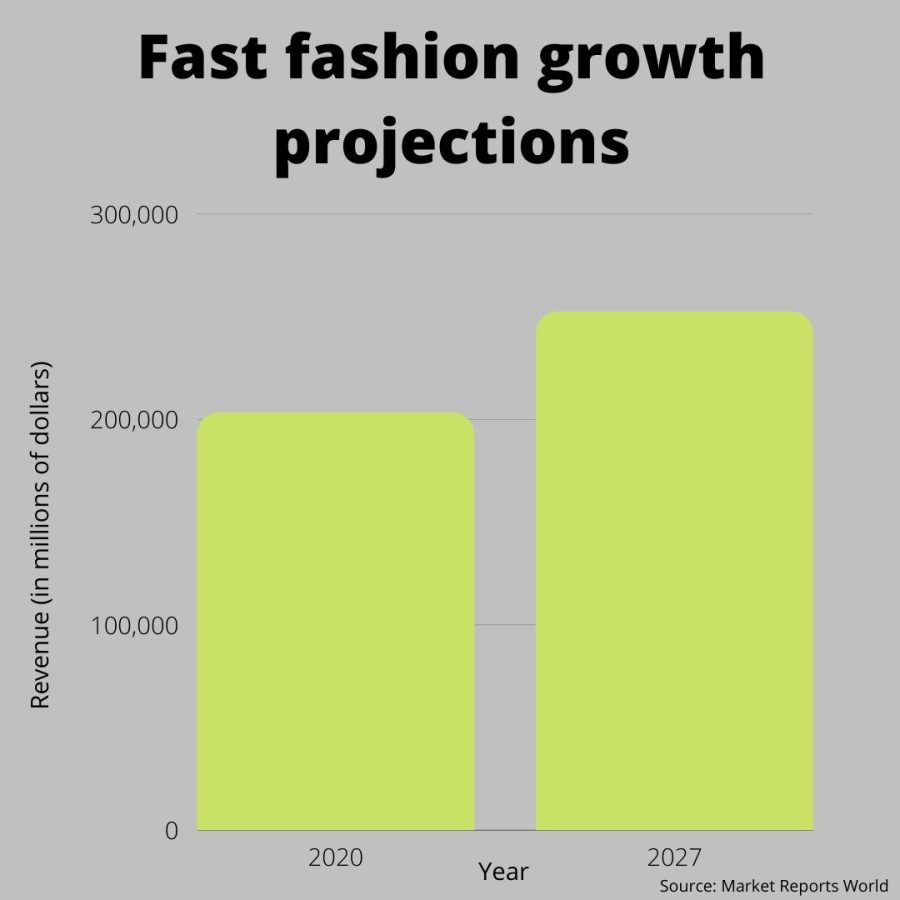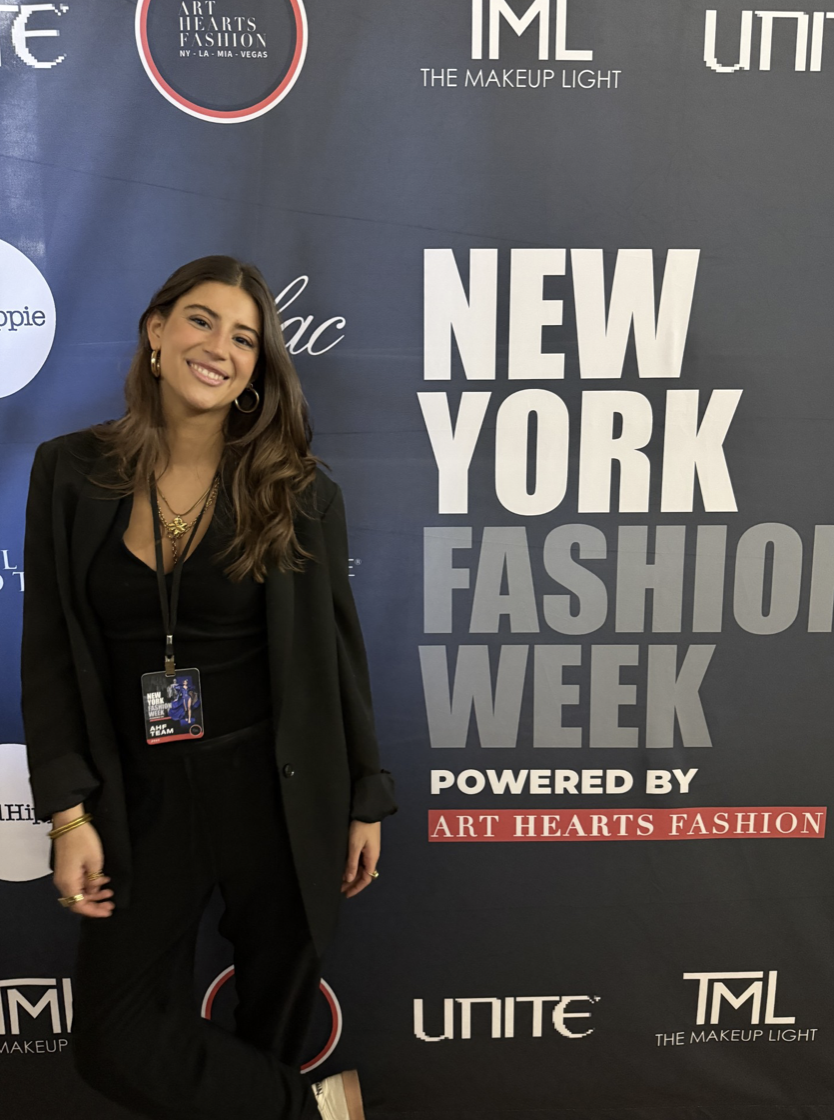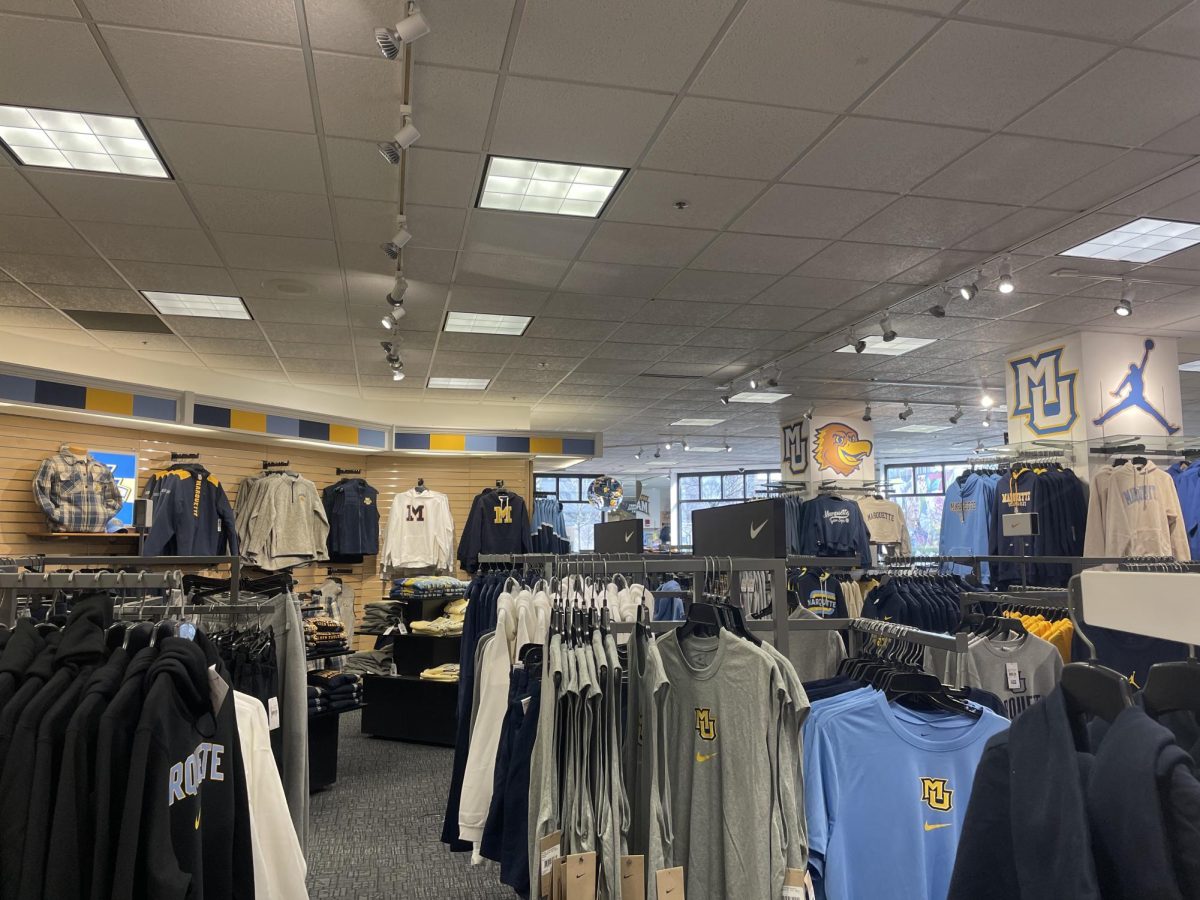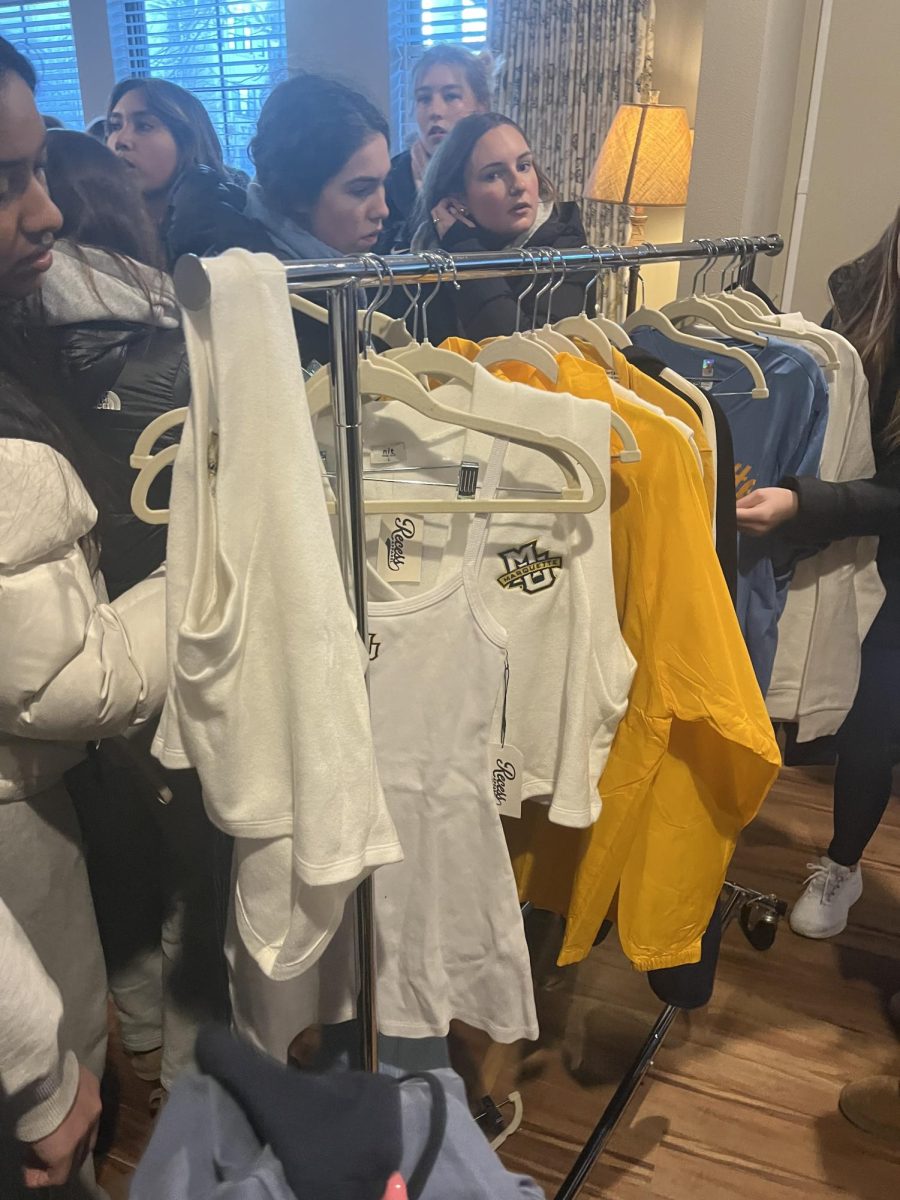This story is fictional and part of a series called “A Greener Future.” It is a prediction of what the global environment may look like 10 years from now. This story is based on present day data and available evidence.
As the models walk down the runway, the lights capture the shifting fabrics. The one strange thing that sets Paris Fashion Week 2o32 apart from any other is the manufacturer of each design: the models themselves.
Each model has sewn her own clothes from patterns given to them by designers including, but not limited to Christain Dior and Chanel. This Fashion Week has been called upon by social media influencers to incorporate sustainable fashion into the major industry, after years of requests.
In 2022, fast fashion had an enormous impact on the global economy. The industry generated $203,300 million in revenue in 2020 and employed 300 million workers around the world. By 2027, it was estimated to increase to $252,440 million.
Take a garment from the runway in Paris Fashion Week to an affordable trendy piece that may end up in a store like H&M or Forever 21 and the end product is fast fashion. This process not only negatively impacts consumer culture but also contributes to the growing problem of climate change.
The trend cycle of continuous demand for new, stylish clothing is to blame for fast fashion. Trends are certain garments that are popular that signal the change in design styles. The trend cycle then details the amount of time that a trend has stayed “trendy.”
The rise and the fall of a trendy garment has is detailed in the introduction, rise, acceptance, decline and obsolescence of a trend cycle.
Historically, the trend cycle lasted 20 years before the widespread usage of social media. In 2022, the fashion trend cycle had been repeating history with pieces from the 1990s and the Y2K circulating back.
However, due to the rise of social media, this trend cycle shrunk. With the constant exposure to current items, the desire for new items grew and turned the cycle into a “hypercycle.” The “hypercycle” then encouraged microtrends, which are specific items that quickly go in and out of style.
Microtrends encourage consumers to buy items they may not necessarily like, but purchase them because they are trendy. In these microtrends, the microtrend cycle lasted for three to five years, but now it only lasts a few months, even as fast as a few weeks.
The production had to keep up with the demands, so companies like Shein, Zara and ASOS rose in popularity. These companies release hundreds of new items per week to keep up with consumer demand for new products.
For SHEIN, the company brought the production of new items down to just ten days.
An investigation conducted by the United States Department of Labor found in Los Angeles that a dress that cost $24.90 did not fairly pay a worker the federal minimum wage of $7.25. If they had, the dress would have cost $30.43. This cost could be more if the factory i was paying $12 per hour minimum wage in Los Angeles.
The process is exploitative to workers who are expected to work at an inhumane rate and pollutes the environment, as the fast fashion industry makes up 10% of the global carbon emissions.
The quick production turnover leads to depletion of our natural resources like water. The introduction of microplastics into our environment and also releases harsh and toxic chemicals in the air, such as hydrogen chloride.
Even though social media caused the emergence of ultra fast fashion, it also brought to light alternative methods of consuming clothing.
The sustainable clothing movement called for ethical production of clothing, asking consumers to be more socially responsible.
The overproduction and overconsumption went out of style. Today, sustainability is a necessity in the fashion industry. Instead of jumping on micro trends, social influencers focus on curating their own style and focus on ethically consumed clothing from sustainable fashion brands or shopping second-hand.
Recently though, there has been attention on making one’s own clothing.
Instead of buying a new garment if there was a hole or other imperfection, it became popular for people to mend their own clothing. After more and more people began to mend their own garments, there was a slow cultural shift as people became more interested in following sewing patterns to make clothes exactly how they want. Social influencers dictated the fashion sphere and led us to where we are today. Major fashion brands that orchestrate the global fashion sphere had the models sew their own clothing to support sustainability in the fashion industry.
Sustainable fashion is not a trend, but it is a necessity within fashion now.
Personal style can no longer be dictated by trends or cycles. Instead, fashion must abide by ethics and the fair treatment of the Earth and its people.
This story was written by Laura Niezgoda. She can be reached at laura.niezgoda@marquette.edu










